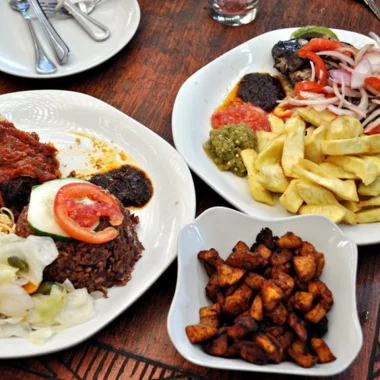When you’re enjoying a glass of your favorite wine, you may not often think about the calories it contains.
However, understanding how many calories are in wine can help you make informed choices if you’re mindful of your calorie intake.
What Exactly are Calories?
Before we dive into the specifics of calories in wine, let’s take a brief moment to understand what calories are.
A calorie is a unit of energy. In the context of nutrition, calories refer to the amount of energy that foods or drinks provide when consumed.
Your body needs this energy to perform basic functions and activities.
When it comes to weight management, the principle is simple – if you consume more calories than your body uses, the excess calories are stored as fat, and you may gain weight.
If you’re interested in learning more about calorie counting, check out our article on what is calorie counting.
How are Calories in Wine Calculated?
The calorie content in wine is determined by two primary factors: alcohol content and sugar content. Alcohol contributes more calories than sugar.
Specifically, alcohol provides 7 calories per gram, while sugar provides 4 calories per gram.
Here’s a simple way to estimate the calories in a glass of wine:
- Multiply the total amount of alcohol (in grams) by 7.
- Multiply the total amount of sugar (in grams) by 4.
- Add these two values together to get the total calorie content.
Keep in mind that this is just a rough estimate. The actual calorie content in wine can vary depending on several factors, including the type of wine, the winemaking process, and the serving size.
In the following sections, we’ll break down the calorie content in different types of wine, from red and white to rosé.
So, whether you’re a fan of a robust red or a crisp white, you’ll be able to understand how your wine choice fits into your calorie goals.
Breaking Down the Calories in Wine
When it comes to understanding how many calories are in wine, it’s helpful to break it down by the type of wine.
Let’s explore the caloric content of three popular types: red wine, white wine, and rosé wine.
Calories in Red Wine
Red wine, a favorite among wine enthusiasts, comes in various types, each with a distinct caloric content.
The calories in red wine typically range between 125 to 190 calories per 5 oz serving, depending on the specific variety and alcohol content.
If you’re curious about the calorie count of a specific type of red wine, you might find our article on how many calories in red wine helpful.
| Type of Red Wine | Calories (per 5 oz) |
|---|---|
| Pinot Noir | 125 |
| Merlot | 130 |
| Syrah | 130 |
| Cabernet Sauvignon | 130 |
| Zinfandel | 130 |
Calories in White Wine
White wine is another popular choice with its light and refreshing taste.
The caloric content of white wine tends to be slightly lower than that of red wine, ranging from 121 to 190 calories per 5 oz serving.
For more detailed information, check out our article on how many calories in white wine.
| Type of White Wine | Calories (per 5 oz) |
|---|---|
| Riesling | 121 |
| Chardonnay | 123 |
| Pinot Grigio | 123 |
| Sauvignon Blanc | 123 |
Calories in Rosé Wine
Rosé wine, with its beautiful pink hue, offers a unique blend of flavors that falls somewhere between red and white wine.
The calories in rosé wine are comparable to those in white wine, typically ranging from 120 to 170 calories per 5 oz serving.
| Type of Rosé Wine | Calories (per 5 oz) |
|---|---|
| Dry Rosé | 120 |
| Semi-Sweet Rosé | 140 |
| Sweet Rosé | 170 |
Remember, the calorie content in wine can vary based on a variety of factors, including the grape variety, fermentation process, alcohol content, and added sugars.
Enjoying wine while being mindful of its caloric content is entirely possible – it’s all about understanding what’s in your glass and making informed choices.
Factors Affecting the Caloric Content of Wine
When counting calories, it’s crucial to understand the factors contributing to the caloric content of different foods and drinks.
In the case of wine, three main factors affect how many calories in wine: alcohol content, sugar content, and serving size.
Alcohol Content
The alcohol content in wine is a major factor contributing to its caloric content.
Alcohol contains about 7 calories per gram, making it second only to fat in terms of calorie density.
This means that wines with higher alcohol content will also generally have higher caloric content.
So, if you’re mindful of your calorie intake, opting for wines with lower alcohol content could be a good strategy.
| Alcohol Content (%) | Calories per Glass (5 oz.) |
|---|---|
| 12 | 120 |
| 13 | 130 |
| 14 | 140 |
| 15 | 150 |
Sugar Content
Sugar content is another key factor impacting the calories in your wine.
Wines can vary greatly in their sugar content, with dry wines containing very little sugar and sweet wines containing a lot.
For example, a glass of dry red wine might contain only 1 gram of sugar, while a glass of sweet white wine could contain up to 20 grams.
Since each gram of sugar contains about 4 calories, this can make a significant difference in the overall caloric content of the wine.
| Wine Type | Sugar Content (g per 5 oz.) | Calories from Sugar |
|---|---|---|
| Dry Red | 1 | 4 |
| Sweet White | 20 | 80 |
Serving Size
Finally, the size of your wine serving will affect how many calories you consume.
A standard serving of wine is usually 5 ounces, but if you fill your glass a little higher, you could easily end up with a much larger serving.
And, of course, the more wine you drink, the more calories you consume.
| Serving Size (oz.) | Calories (for a 12% alcohol wine) |
|---|---|
| 5 | 120 |
| 6 | 144 |
| 7 | 168 |
| 8 | 192 |
Understanding these factors allows you to make more informed decisions when enjoying a glass of wine.
And remember, you don’t have to give up wine completely to maintain a healthy diet – it’s all about balance and moderation.
Balancing Wine Enjoyment and Calorie Counting
Appreciating a glass of wine and keeping track of your calorie intake doesn’t have to be mutually exclusive.
With some mindful drinking practices and a few handy estimation techniques, you can enjoy your favorite wines while maintaining your calorie goals.
Tips for Mindful Drinking
- Portion Control: Remember, a standard serving of wine is 5 ounces. It’s easy to pour more, especially when you’re at home, but try to stick to this serving size to count your calories accurately.
- Choose Lower-Calorie Wines: Dry wines generally contain fewer calories than sweet wines. This is because dry wines have less residual sugar. Also, wines with a lower alcohol content will usually have fewer calories. Check out our articles on how many calories in red wine and how many calories in glass of white wine for more information.
Savor Your Wine: Take the time to savor each sip. This enhances your enjoyment of the wine and can also help you drink less overall.
- Pair with Healthy Foods: Pair your wine with healthy foods like lean proteins and vegetables. This can help you feel full and satisfied while keeping your calorie intake in check.
Easy Ways to Estimate Calories in Wine
Estimating your wine’s calorie content can be tricky since it’s not generally listed on the bottle.
Here are some handy tips:
- Use a Calorie Counting App: There are many apps available that can help you estimate the calorie content in a variety of wines.
- Remember the Basics: On average, a 5-ounce serving of red wine contains about 125 calories, while the same white wine serves about 121 calories.
- Consider the Sweetness and Alcohol Content: Wines with higher alcohol content and residual sugar content will generally have more calories.
| Type of Wine | Average Calories per 5 oz Serving |
|---|---|
| Dry Red | 125 |
| Dry White | 121 |
| Sweet Red | 165 |
| Sweet White | 160 |
Remember that enjoying wine is about more than just counting how many calories in wine.
It’s about savoring the flavors, textures, and overall experience. So, be mindful, make smart choices, and don’t forget to enjoy your wine!
The Bigger Picture: Wine in a Balanced Diet
When you’re keeping an eye on your calorie intake, it’s crucial to understand not only how many calories in wine you’re consuming but also how wine fits into your overall nutrition and weight management goals.
Wine and Nutrition
Contrary to what you might think, wine isn’t just empty calories.
In fact, wine—particularly red wine—contains various compounds that can provide certain health benefits.
Red wine is known to contain antioxidants such as resveratrol, which has been linked to heart health.
However, it’s important to remember that these benefits hinge on moderation.
While a glass of wine can complement a meal and provide minor nutritional benefits, it shouldn’t be relied upon as a significant source of nutrients.
To get a clearer picture of how wine’s nutritional value compares to other foods, take a look at the calorie count in some common foods and beverages:
| Food/Beverage | Calories |
|---|---|
| Glass of red wine (5 oz) | 125 |
| Glass of white wine (5 oz) | 121 |
| Slice of cheese (1 oz) | 113 |
| Can of Coke (12 oz) | 140 |
| Two scrambled eggs | 140 |
| Half a cup of rice | 103 |
Wine and Weight Management
If you’re tracking your weight, you might be concerned about how wine fits into your diet.
You’re right to pay attention—the calories in wine can certainly add up and may contribute to weight gain if consumed in excess.
This is especially the case with sweeter wines, which contain more sugar and, therefore, more calories.
However, that doesn’t mean you need to avoid wine altogether to maintain your weight. It’s all about balance and moderation.
Consider these tips:
- Opt for dry wines: They usually have fewer calories than sweet wines since they contain less sugar.
- Pay attention to alcohol content: Wines with higher alcohol content tend to have more calories.
- Practice portion control: Instead of pouring a full glass, aim for a standard serving size of 5 ounces.
- Make it a treat: Instead of a daily habit, consider enjoying wine on special occasions or only a few times a week.
Remember, it’s possible to enjoy wine while maintaining a balanced diet and managing your weight.
It’s all about making informed decisions and finding the balance that works best for you.
For more tips on calorie counting and weight management, check out our article on what is calorie counting.









